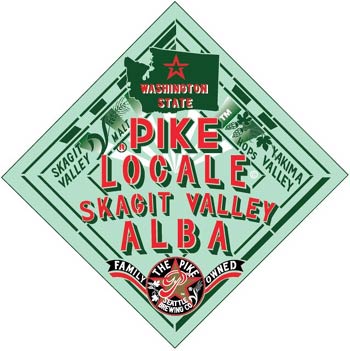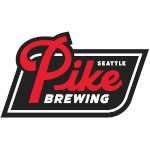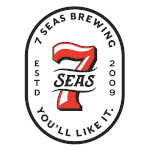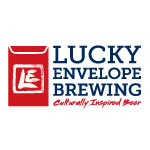I hereby declare this Washington Beer Week. I unilaterally decided that the week leading up to the Washington Brewers Festival should be dubbed Washington Beer Week. I did not ask for approval or seek consensus, I just declared it Washington Beer Week, for whatever that’s worth.
To celebrate Washington Beer Week, I want to tell you about three Washington beers, each brewed with a supremely Washington twist: Chuckanut Brewery’s Local Malt Alt, Pike Brewing Company’s recently released Locale Skagit Valley Alba, and Brickyard Brewing’s forthcoming cream ale.
Two weeks ago, Pike Brewing released Locale Alba, a beer that has been called Washington’s first true varietal beer. Meaning, all of the ingredients were grown and produced in Washington. But the story isn’t just about Pike’s new beer, and the other aforementioned beers, it’s about what they represent.
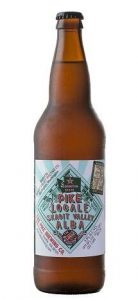 All of these beers were brewed, or will be brewed, using locally grown barley, malted by Skagit Valley Malting. Working in cahoots with the Washington State University Bread Lab, and the University’s test farms in the Skagit Valley, as well as local farmers, Skagit Valley Malting is doing something really interesting and important for the future of craft beer.
All of these beers were brewed, or will be brewed, using locally grown barley, malted by Skagit Valley Malting. Working in cahoots with the Washington State University Bread Lab, and the University’s test farms in the Skagit Valley, as well as local farmers, Skagit Valley Malting is doing something really interesting and important for the future of craft beer.
Prohibition Hangover
The story begins nearly 100 years ago. Prohibition affected more than America’s breweries, it also impacted the farmers who supplied ingredients to the breweries. To some extent, it devastated the barley and hop farmers, who turned to other crops to survive.
After Prohibition, the emergence of America’s macro breweries largely dictated what kind of barley farmers and malting companies produced.
Since modern craft beer was born in the early 1980s, brewers have used a primary ingredient that evolved at the behest of the macro breweries: malted barley that was developed for use in macro brews and not micro brews. They made due and continue to do a great job with what is available.
“With Pike Locale we are reviving the pre-Prohibition tradition of sourcing quality ingredients as close to the brewery as possible,” said Pike Brewing Founder and President, Charles Finkel. “Prohibition dealt a blow to brewers and small farmers alike. And since that time craft brewers have done an admirable job brewing delicious beers with a very limited palate of malts. “
Don’t Call Me Small
Most often, beer is brewed with a base malt that makes up the large majority of the “malt bill,” and then lesser quantities of specialty malts. (BTW, when we say malt or barley, what we’re really talking about is malted barley; the terms are all used interchangeably.) Most craft beer recipes starts out with 2-row pale malt as the base malt. It is the most basic ingredient, one that is shared across countless different beer recipes. When you see a grain silo outside a brewery, more than likely it is full of 2-row pale malted barley.
In the United States, the vast majority of barley is grown in Idaho, Montana, and North Dakota. Typically, craft breweries get their 2-row pale malt from one of a handful of large malt companies that process and supply huge quantities of malted barley to the entire brewing industry.
There’s nothing wrong with any of this, and you’ll rarely hear brewers complain about the quality of the malted barley they use, but terms like local and small, which are otherwise pervasive in the world of craft beer, really don’t apply to malted barley.
And that is what makes Skagit Valley Malting worth talking about. Not only are they producing malted barley on a smaller scale, but they’re using locally grown barley and delivering a product that is interesting to craft brewers.
Truly Local Beer
The focus on craft is why Charles Finkel is excited. “Pike Locale ushers in a new chapter with these locally grown, varietal malts that will introduce beer drinkers to new flavors.”
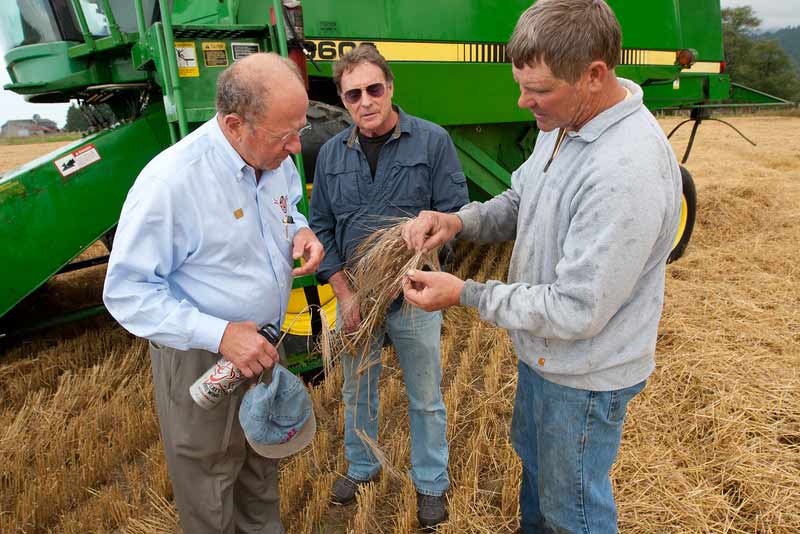
He’s right. What’s most important about all of this is that Skagit Valley Malting is focusing on producing interesting malts, looking to source and produce locally grown malted barley that will add character, complexity and quality to the beer.
Pike Brewing’s Locale Skagit Valley Alba used base malt grown by Knutzen Farms (Skagit Valley) and includes other malts from Palouse Colony Farm (Whitman County), Washington Bulb Co. and Hedlin Farms (Skagit Valley), all malted by Skagit Valley Malting. The remainder of the recipe includes Cascade, Centennial and Mosaic hops from the Yakima Valley, honey from Salish Lodge’s apiary, and water from the Cedar River Watershed. The magic of fermentation is provided by Pike’s own yeast. Add it all up and you have a true Washington varietal beer.
The brewery and the beer are getting a lot of press, and rightly so. After all, Pike Locale Skagit Valley Alba is available right now and Pike Brewing is one of Seattle’s most-beloved and well-respected breweries, and they’ve done an admirable job of spreading the good word, but they aren’t the only Washington brewery using Skagit Valley Alba.
Woodinville’s Brickyard Brewing intends to release a new cream ale in July that they will brew with Skagit Valley Alba. The first Washington beer brewed with Skagit Valley Alba actually showed up last summer when Chuckanut Brewery released its Local Malt Alt. Likely, other breweries will follow suit as Skagit Valley Malting gains momentum.
Developed Specifically for Craft Beer, By Design or Not
Mari Kemper of Chuckanut Brewery explains how Skagit Valley Malting came into existence.  “The farmers of Skagit Valley were looking to make their farms more sustainable by growing barley and wheat as their cover crop, which they could sell instead of simply mulching back into the land to replenish it.”
“The farmers of Skagit Valley were looking to make their farms more sustainable by growing barley and wheat as their cover crop, which they could sell instead of simply mulching back into the land to replenish it.”
A cover crop is planted to sustain and nourish the soil when a field’s primary crop is out of season. Typically, before planting the field’s regular crop, the cover crop is tilled into the soil. What these farmers wanted to do was find a cover crop that could they could actually harvest and sell.
“Growing the barley meant they would need a malting company to malt small quantities of barley and wheat for bakers, cooks, brewers, and distillers. Skagit Valley [Malting] was created to do just that.”
“The originators of the malting company knew they would have to create their own machine to malt the small quantities of product. And the WSU test farms in Skagit had to find and breed the seeds that would work in our wet climate.”
According to Brickyard Brewing, “We expect to be able to continue getting different varieties of malt in small batches from Skagit Valley malt as the year comes along. New malt equals new flavor, and happy local farmers.”
And happy local beer drinkers, I might add.

